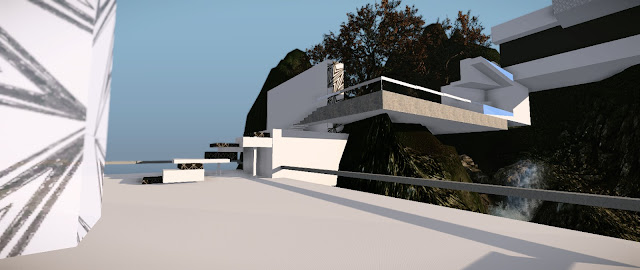Connecting the community through vertical meeting spaces in order to both observe and preserve the city landscape.
Mashup news article
The act of inhabitation is enriched by the potential to manipulate ways of observing place and landscape, by taking the existing city plan and flipping it to create a new vertical typology. School buildings follow the logic of sprawl, they are familiar, small scale, easily accessible buildings. Collective spaces create a sense of connection, improving the lives of the citizens. All spaces are gathered around a central square, utilising ‘urban voids’ that currently exist within the city's plan in an ‘appropriate’ response to place. “In the realm of social sustainability, the anonymous feeling of immense cities is challenged by interconnecting typically isolated diverse city zones.” It becomes a 'society building', a space of possible multiethnic exchange and comparison. The city will increase in density but reduce in scale, favouring the exchanging of knowledge, experience and socialisation and no longer suffering from an identity crisis. Cultural identity can evolve through a contemporary 'landscape of memory', and at times these are specifically framed views, at other times they are abstracted views. Encouraging the increased connection of social and cultural ties leads to the development of a sequence of platforms for observing the landscape. All the spaces face each other, with a distinct desire to hover above the ground, re-thinking how we perceive the typology of the city by reducing its environmental impact and creating places of knowledge preservation.
Green text: "Vertical typologies in Shanghai: Pinkcloud proposes vertical masterplan."
Blue text: “Heavy setting: Contemporary farmhouse touches the earth ‘heavily’?”
http://www.worldarchitecturenews.com/index.php?fuseaction=wanappln.projectview&upload_id=10668&q=touch%20the%20earth%20lightlyPink text: “Learning through living: Sustainable, affordable school building sets example for children and community alike”
http://www.worldarchitecturenews.com/index.php?fuseaction=wanappln.projectview&upload_id=21694&q=schools
I then derived my overall theory from the main ideas of these three articles, condensing the Mashup into:
"Connecting the community through vertical meeting spaces in order to both observe and preserve the city landscape."
18 Sketch Perspectives
Based on famous architectural theories.
36 Custom Textures
The Bridge and the Folly
Plan used as basis of design:
Diller and Scofidio, Slow House
The distinctive twisted forms were created by merging a simplified version of this plan, in both plan and section.
Draft Cryengine environments:
My Dutch heritage informed my choice of location, the 'urban valley' that is formed from the canals of Amsterdam.
Developed Cryengine environment and model
Overview of space allocation:
 |
| Walkways connect the pathway to the rooms within the school, the path emphasised by the custom texture. |
 |
| An outdoor seating area adjoining the food court affords views of the city and its height accentuates the notion of a vertical meeting space. |
Peer feedback sheets
From final tutorial, based on draft submission post.
Links to files
Sketchup Model in 3D warehouse:
http://sketchup.google.com/3dwarehouse/details?mid=489b16b1bddbe6ddc1ade5a15d1133c3
Cryengine file in dropbox:
https://www.dropbox.com/s/iijutxiuokg7mhd/3461066%20Elise%20Vanden%20Dool%20Exp3.zip
Credits for models used in Sketchup/Cryengine (from 3D warehouse:)
- "Bike" by 15beckean uploaded Feb 12, 2009
- C1 Concept car - Low Poly by COL 1 uploaded Feb 7, 2010
- Old Dutch houses, Delft uploaded by wouter on Mar 4, 2009
- Old Dutch houses, Delft uploaded by wouter on Mar 4, 2009
- Dutch motorsloop uploaded by AnnaBlume Aug 2, 2007.
























.jpg)




























